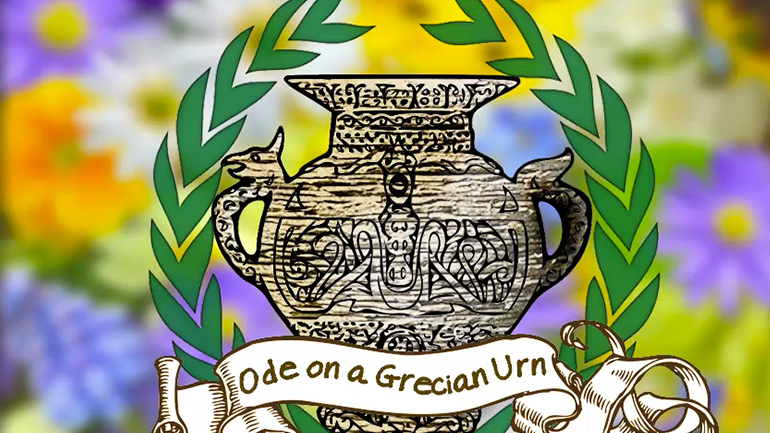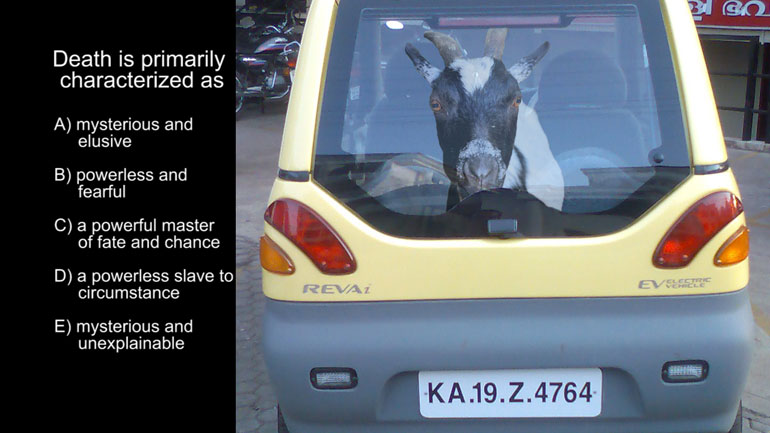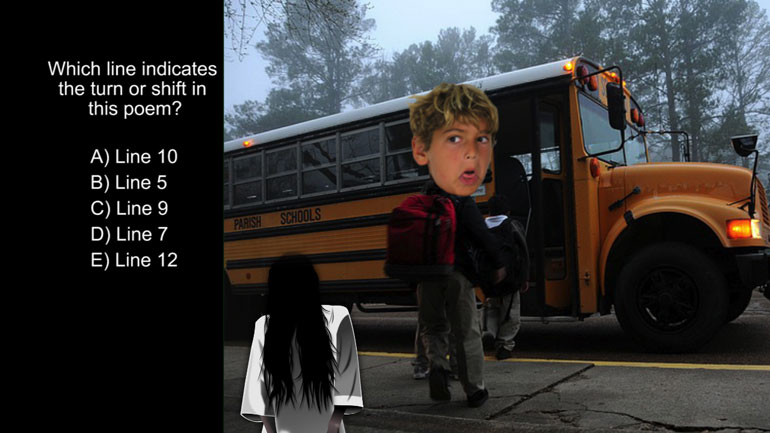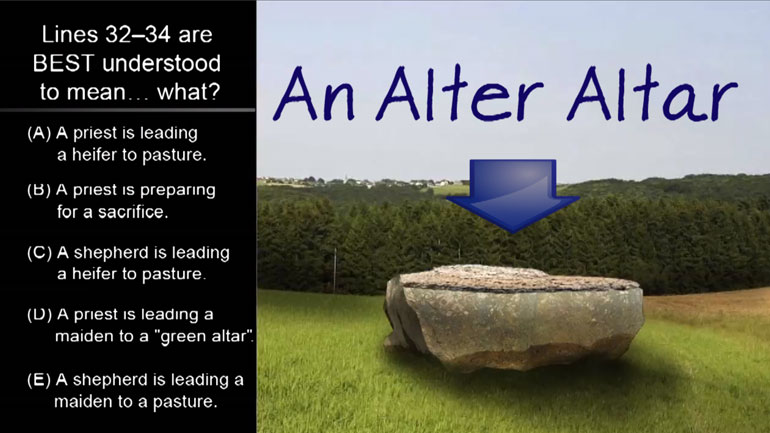ShmoopTube
Where Monty Python meets your 10th grade teacher.
Search Thousands of Shmoop Videos
AP English Literature and Composition 1.2 Passage Drill 5 254 Views
Share It!
Description:
AP English Literature and Composition 1.2 Passage Drill 5. What is being personified?
Transcript
- 00:03
Here's your shmoop du jour, brought to you by the word "Canst." Because... we canst think
- 00:08
of anything better.
- 00:16
What is being personified?
- 00:18
And here are the potential answers...
- 00:25
Life... life... give our creation... LIIIIIIFE!!!
Full Transcript
- 00:28
Yeah, any time we're faced with a personification question, we're pretty much playing Dr. Frankenstein.
- 00:33
There's something in this poem that is NOT a person, but the author is treating it as
- 00:37
if it IS one.
- 00:38
Let's go through our answer choices and see how everything shakes out...
- 00:41
Is "might" being personified?
- 00:44
Well, it... might. In this case, we're talking about the "power" version of might, not the... "maybe" kind.
- 00:50
The author does call Death "mighty and dreadful" on line 2...
- 00:53
...but, we just kinda answered our own question.
- 00:56
He's using "might" to describe something... so he's not making it a person.
- 01:00
What about pride?
- 01:01
Once again, we won't find the exact word, but we will find a form of it...
- 01:05
...right out of the gate, the poem reads: Death, be not proud...
- 01:08
But again, pride is used as a descriptor here -- not as a person.
- 01:12
C -- Death?
- 01:13
Yup. As often as we've seen Death depicted as the tall creepy guy holding gardening equipment...
- 01:19
...it isn't actually a real person. So, when the poem keeps referring to death like it's
- 01:22
a living, breathing dude -- how ironic... the author is personifying it.
- 01:27
Sleep and Pleasure, while mentioned, are also bogus answers.
- 01:30
C's our guy.
- 01:32
Not that... C is an actual guy...
Up Next
AP English Literature and Composition 1.2 Passage Drill 4. As which of the following is the object being personified?
Related Videos
AP English Literature and Composition 1.4 Passage Drill 3. How is Burne's view of pacifism best characterized in lines 57 through 67?
AP English Literature and Composition 1.6 Passage Drill 5. Death is primarily characterized as what?
AP English Literature and Composition 1.7 Passage Drill 5. Which line indicates the turn or shift in this poem?
AP English Literature and Composition 1.9 Passage Drill 4. Lines 32-34 are best understood to mean what?




